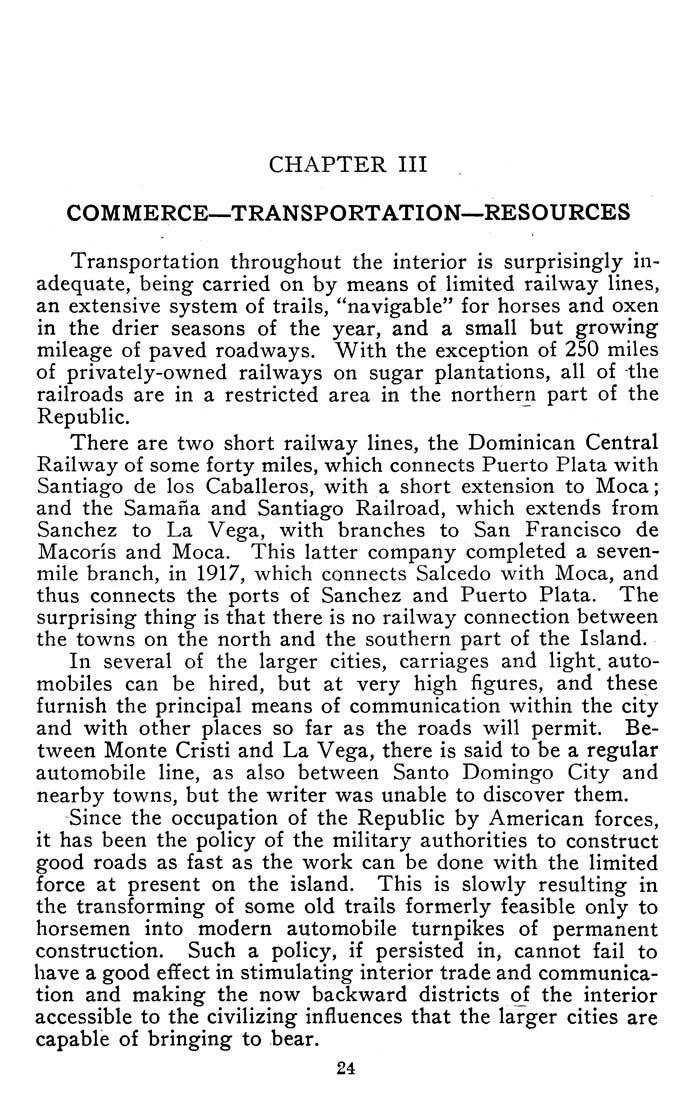CHAPTER HI
COMMERCE—TRANSPORTATION—RESOURCES
Transportation throughout the interior is surprisingly in¬
adequate, being carried on by means of limited railway lines,
an extensive system of trails, "navigable" for horses and oxen
in the drier seasons of the year, and a small but growing
mileage of paved roadways. With the exception of 250 miles
of privately-owned railways on sugar plantations, all of the
railroads are in a restricted area in the northern part of the
Republic.
There are two short railway lines, the Dominican Central
Railway of some forty miles, which connects Puerto Plata with
Santiago de los Caballeros, with a short extension to Moca;
and the Samafia and Santiago Railroad, which extends from
Sanchez to La Vega, with branches to San Francisco de
Macoris and Moca. This latter company completed a seven-
mile branch, in 1917, which connects Salcedo with Moca, and
thus connects the ports of Sanchez and Puerto Plata. The
surprising thing is that there is no railway connection between
the towns on the north and the southern part of the Island.
In several of the larger cities, carriages and light, auto¬
mobiles can be hired, but at very high figures, and these
furnish the principal means of communication within the city
and with other places so far as the roads will permit. Be¬
tween Monte Cristi and La Vega, there is said to be a regular
automobile line, as also between Santo Domingo City and
nearby towns, but the writer was unable to discover them.
Since the occupation of the Republic by American forces,
it has been the policy of the military authorities to construct
good roads as fast as the work can be done with the limited
force at present on the island. This is slowly resulting in
the transforming of some old trails formerly feasible only to
horsemen into modern automobile turnpikes of permanent
construction. Such a policy, if persisted in, cannot fail to
have a good effect in stimulating interior trade and communica¬
tion and making the now backward districts of the interior
accessible to the civilizing influences that the larger cities are
capable of bringing to bear.
24
|








